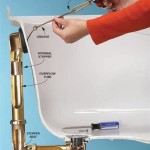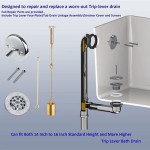The Essential Aspects of Bathtub Faucet Seals and Why They Matter
Bathtub faucet seals play a vital role in ensuring a functional and watertight bathing experience. These small, yet crucial components are responsible for preventing leaks and ensuring the smooth operation of your faucet. Understanding the different aspects of bathtub faucet seals can help you make informed decisions and maintain a trouble-free bathroom.
Types of Bathtub Faucet Seals
There are two main types of bathtub faucet seals: O-rings and washer seals. O-rings are circular seals made of rubber or silicone, while washer seals are flat discs made of rubber or metal. Both types of seals create a watertight barrier between the faucet and the fixture or valve, preventing water from leaking out.
Materials and Durability
The material of a bathtub faucet seal affects its durability and performance. Rubber seals are common and offer good flexibility and water resistance. Silicone seals are more durable and resistant to extreme temperatures, making them ideal for areas with fluctuating water conditions. Metal washer seals provide excellent durability and can withstand high water pressure, but they are less flexible than rubber seals.
Proper Installation
Proper installation is crucial to ensure the effectiveness of bathtub faucet seals. Worn or damaged seals should be replaced promptly to prevent leaks. For O-rings, use a dab of silicone grease to lubricate the seal before installation. Washer seals should be centered and tightened evenly to create a snug fit. It's recommended to follow the manufacturer's instructions for proper installation to avoid any issues.
Maintenance and Replacement
Bathtub faucet seals require regular maintenance to prevent leaks and extend their lifespan. Periodically inspect the seals for cracks, wear, or damage. Clean the seals using a soft cloth and avoid using abrasive cleaners that could damage the rubber or silicone. If a seal becomes damaged or worn, it should be replaced promptly to prevent leaks and water damage.
Consequences of Ignoring Faucet Seals
Ignoring bathtub faucet seals can lead to a range of problems, including:
- Leaks and water damage: Worn or damaged seals allow water to leak out, leading to water stains, mold growth, and costly damage to your bathroom and fixtures.
- Reduced water pressure: Leaking seals can cause a drop in water pressure, affecting the performance of your shower or faucet.
- Increased water bill: Leaks can lead to increased water consumption, resulting in higher water bills.
- Inconvenience and frustration: Dealing with a leaking bathtub faucet is an inconvenience that can be easily avoided with proper seal maintenance.
By understanding the essential aspects of bathtub faucet seals and maintaining them properly, you can ensure a watertight and trouble-free bathroom experience. Remember, small details like faucet seals can have a significant impact on the overall functionality and longevity of your bathroom fixtures.

Replacement Diverter Seal For 15 114015 Tub Spouts Dea Bathroom Machineries

Bath Tub Spouts The Largest Selection Of On Web

Bath Tub Spouts The Largest Selection Of On Web

How To Install Red Disc Seal Protect Your Bathtub Wall Prevent Drywall Damage Www Reddiscseal Com

How To Fix A Leaky Bathtub Faucet 6 Ways Stop Drips

How To Fix A Leaky Bathtub Faucet 6 Ways Stop Drips

How To Replace A Bathtub Spout Diy Family Handyman

Fix Leaking Shower Head Or Bathtub Faucet Rebuild Replace Valve

How To Replace A Bathtub Faucet

How To Fix A Leaky Bathtub Faucet 6 Ways Stop Drips
Related Posts








